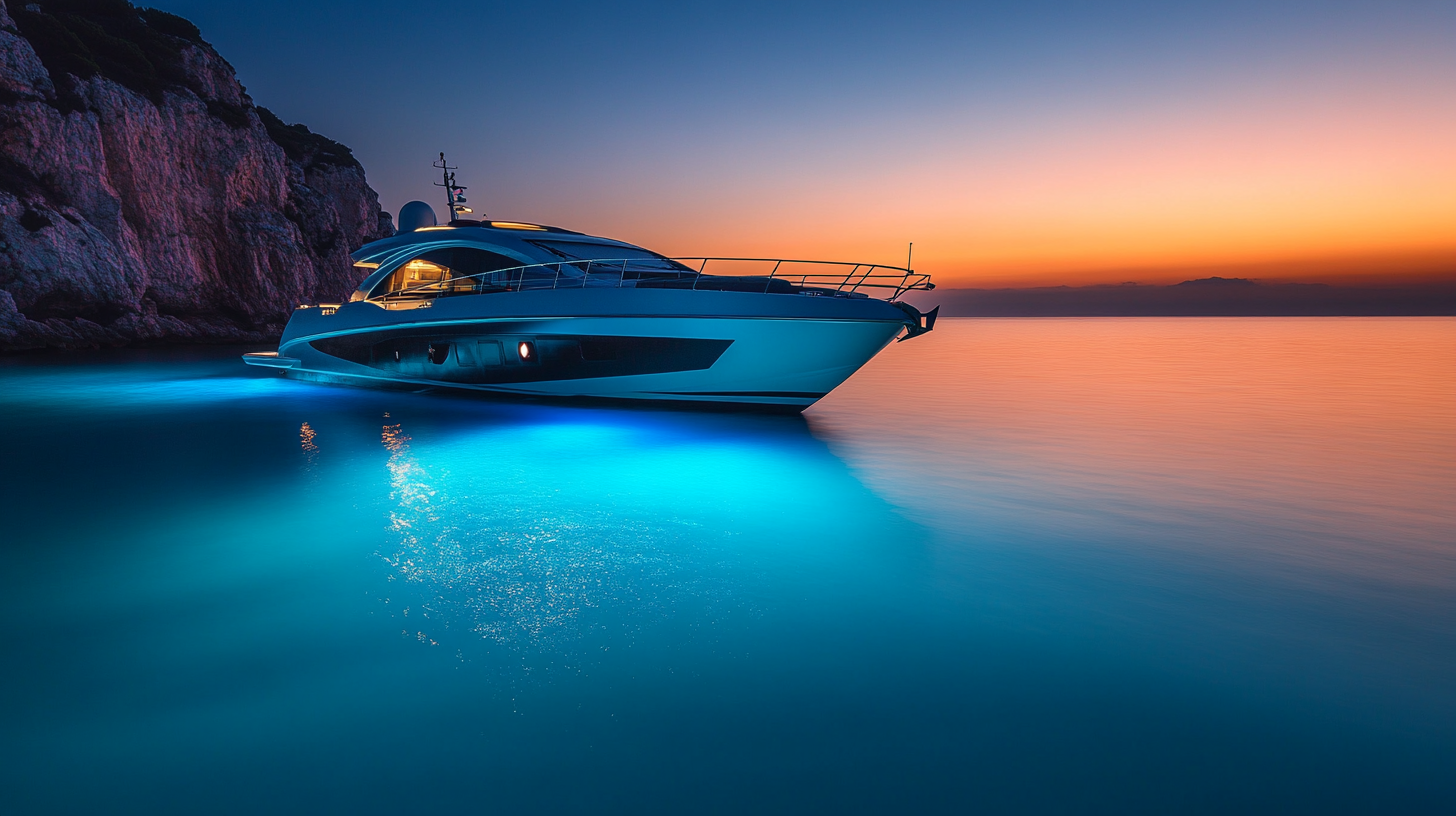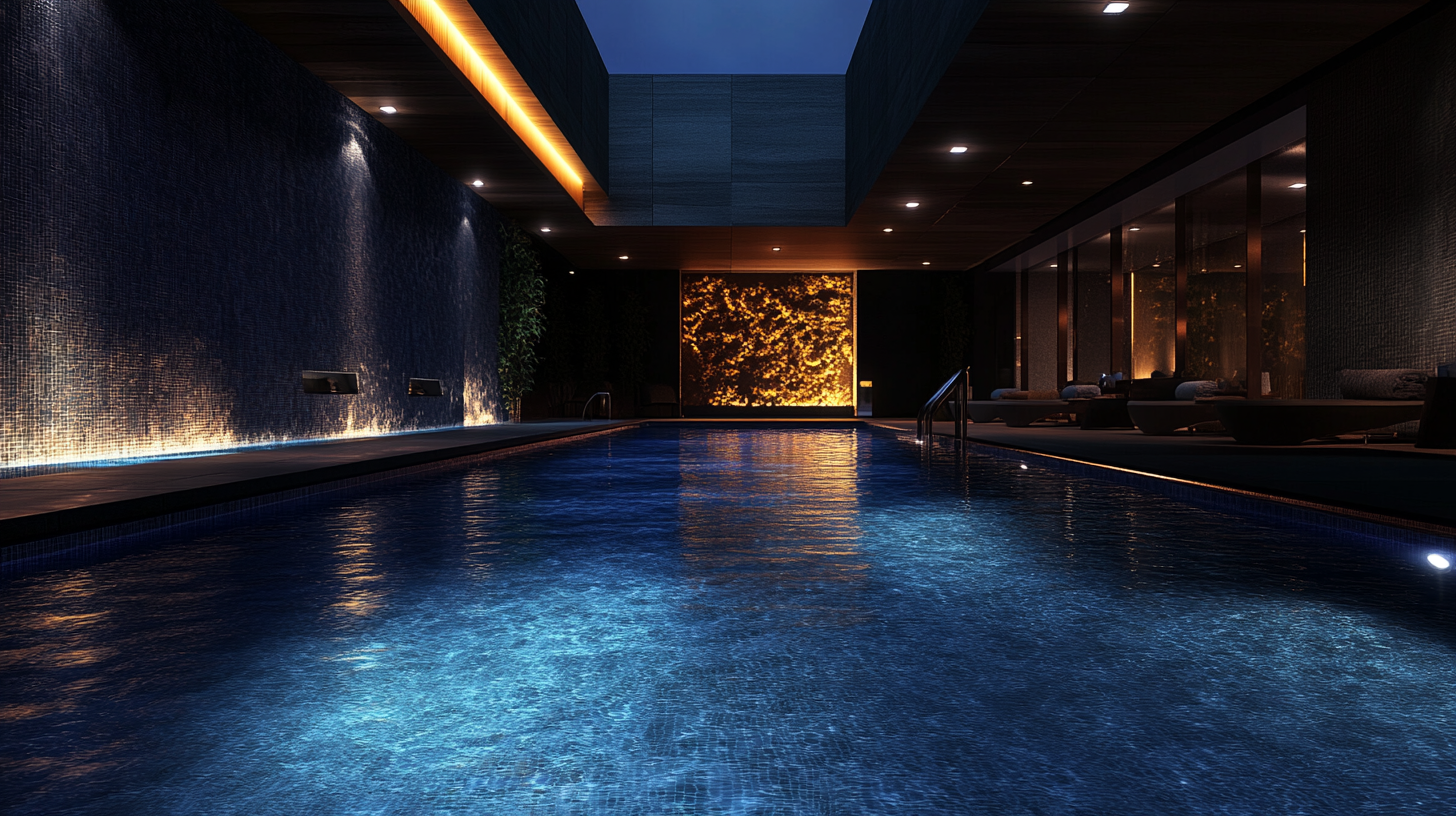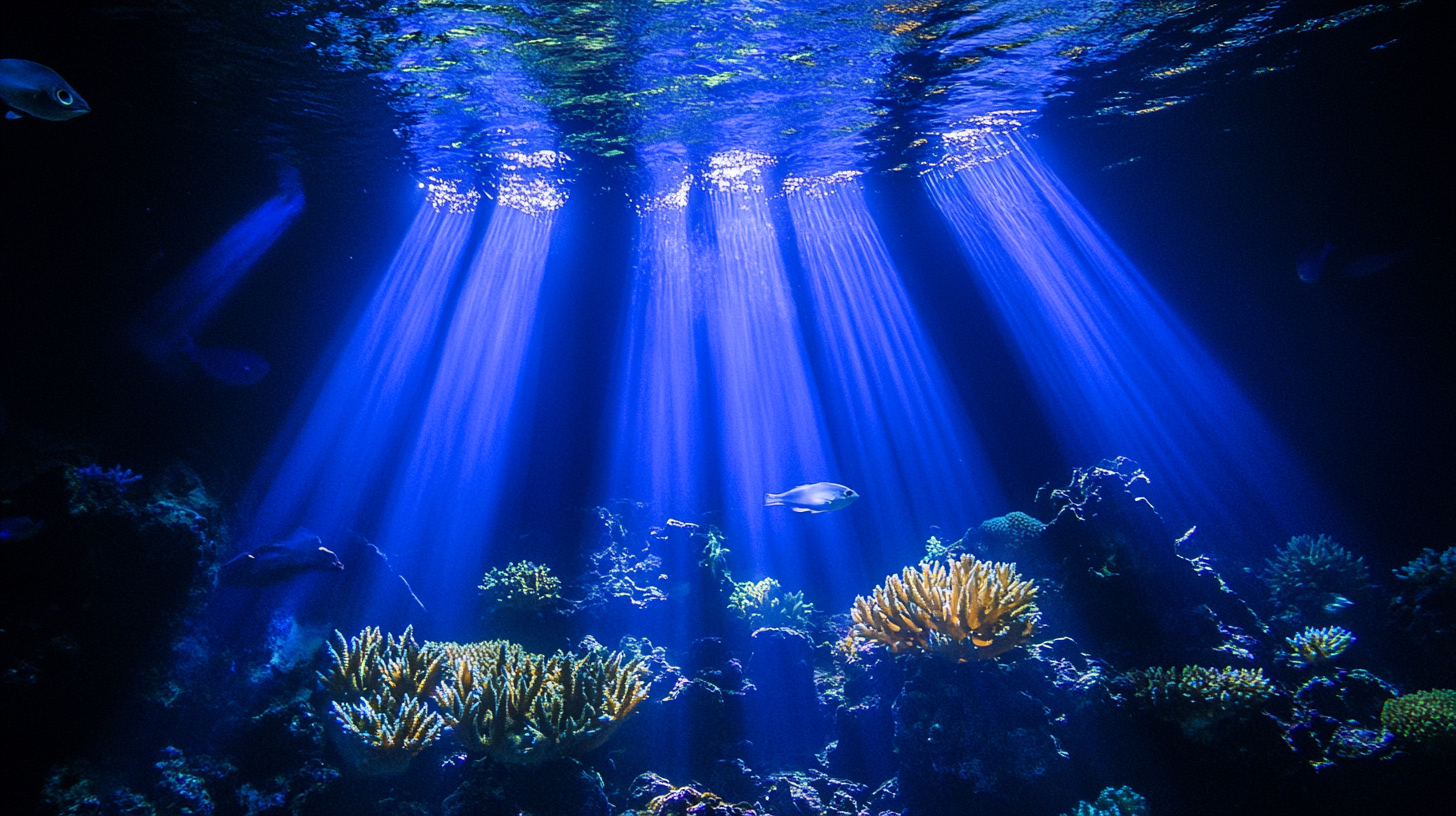Choosing underwater boat lights with adjustable brightness settings
Adjustable brightness settings in underwater boat lighting allow you to control the intensity of the light based on the specific conditions around you. Whether you’re anchoring in shallow waters or navigating through deeper areas, adjusting the brightness can help tailor the illumination to match the environment. For example, you may want lower brightness levels in clear, calm waters to avoid overwhelming the space, while brighter settings could be more effective in murkier or deeper conditions. These settings offer both flexibility and efficiency, making your underwater lights more versatile for various scenarios.
When considering adjustable brightness options, it’s also important to think about the different activities you’ll be engaged in. Are you night fishing? Just relaxing by the dock? Or perhaps showing off your boat at a marina? Each occasion might require a different light level, and the ability to adjust the brightness will give you the perfect ambiance for any situation. Moreover, this level of control can also help conserve power, which is especially valuable during longer outings. So, when browsing options, prioritize lighting solutions that allow for easy brightness customization.
Key features to consider in underwater boat lights
When selecting underwater boat lights, there are several key features that can make a significant difference in both performance and convenience. First and foremost, you’ll want to consider the durability of the lights. Since these lights will be constantly exposed to the harsh marine environment, it’s essential that they are built from high-quality, corrosion-resistant materials like stainless steel or marine-grade bronze. Saltwater can be especially destructive, so choosing lights that also have a waterproof rating—typically IP68—is crucial to ensure longevity.
Another important feature is the color options available. While white or blue are the most common and traditional choices for underwater lights, many modern lights come with RGB functionality. This allows you to choose from a range of colors for a custom underwater glow. If you’re looking to enhance the appearance of your boat in marinas or during relaxed nighttime cruises, the ability to switch between colors can add an extra element of style and fun. For angling enthusiasts, some anglers believe that particular colors, like green, can attract certain types of fish. Paired with adjustable brightness settings, having control over both the color and intensity of your boat lighting can create a dynamic experience and suit various moods or activities.
Energy efficiency is another factor many boaters must consider when making their choice. LED bulbs are by far the most energy-efficient option for underwater lights, offering bright illumination while consuming less energy than traditional halogen alternatives. Since power availability on a boat is often limited, opting for energy-efficient adjustable brightness LED lights can provide both performance and longevity without requiring massive amounts of power, helping to avoid battery drain during extended use.
Heat dissipation is another feature to think about, especially with brighter LEDs that generate more heat. Some high-quality underwater lights come with built-in thermal management systems. These systems help prevent overheating, which can extend the life of the lights and safeguard the boat’s electrical system. This consideration is even more important if you plan to run your lights for long periods of time while maintaining higher brightness levels.
Ease of operation plays a critical role in the overall experience. Look for underwater lights that come with user-friendly controls. Wireless remote controls or mobile apps can be exceedingly handy, allowing for quick adjustments to brightness and color settings without requiring physical access to the lights themselves—perfect for moments when you’re entertaining guests or need to make swift adjustments on the fly. Some models can even integrate with existing boat systems for seamless control directly from your dashboard.
Benefits of adjustable lighting for different environments
One of the most appealing aspects of adjustable brightness in underwater boat lighting is the ability to customize lighting for a range of environments and boating activities. Different water conditions and settings call for different light levels, and when you’re equipped with adjustable brightness, you can create the perfect ambiance whether you’re docked at a marina, cruising the open sea, or anchored in a quiet cove. This feature gives you the power to adapt seamlessly to your surroundings, offering excellent functional and aesthetic benefits.
For instance, when you’re navigating through murky or deep waters, cranking up the brightness can dramatically improve visibility. This is especially helpful for spotting obstacles, marine life, or even other boats lurking in the distance. On the flip side, when you’re in shallow waters or areas with crystal-clear water, turning the brightness down can create a subtler and more relaxing glow. Overly bright lighting in clear conditions can feel overwhelming or excessive, so having that ability to tone it down can make your boating experience more enjoyable and peaceful.
If you’re a night fisher, adjustable brightness settings can help you maintain just enough light to illuminate your gear and area without causing glare that could scare away the fish. Some boaters love to use dim, green-tinted lighting, as green light is believed to attract certain types of fish. Additionally, lower brightness levels conserve power, which can be a lifesaver on longer fishing excursions or during extended hours at sea.
Beyond functionality, adjustable lighting adds a whole new layer of enjoyment and style to social and leisure activities. Imagine hosting a sunset party or simply lounging under the stars—soft, ambient underwater lights can create the perfect atmosphere for these moments. When you’re docked or moored at a marina, turning up the brightness to show off your boat or highlight its sleek design can turn heads and make your vessel stand out from the crowd. Some boaters even enjoy syncing their lights to match the prevailing evening hues or party vibes.
The ability to control your underwater lights and adjust their brightness ensures that you’re prepared for any scenario or environment. Whether you need strong illumination to maximize safety in dark, unpredictable waters or prefer an intimate, cozy glow for a romantic night out on the water, the versatility offered by adjustable brightness makes boat lighting more than just a functional tool—it becomes a key player in shaping the experience you want, wherever you sail.
Installation tips for underwater boat lights
When it comes to mounting underwater lights with adjustable brightness settings, the emphasis should always be on ensuring both safety and durability. The installation process may differ slightly based on the type of boat you have and the lighting system you’ve chosen, but some universal steps will help ensure that your underwater lights function optimally and withstand long-term exposure to harsh marine environments. Choosing the right location, using proper sealing techniques, and paying attention to electrical connections are all critical factors during installation.
Firstly, carefully choose where to install the underwater lights. The most common spots are under the boat’s transom, on the hull, or at the bottom near the waterline. These locations provide optimal light spread and coverage when you adjust the brightness. If you aim to illuminate specific areas of the surrounding waters, plan the placement carefully to align the light with your desired effect. Placing lights symmetrically on both sides of the boat can create a balanced, visually pleasing effect, which is ideal for marina displays or social settings. In contrast, for practical purposes like navigation and night fishing, you might want the focus to be more concentrated in key zones to ensure safety and visibility.
Another critical consideration is proper waterproofing and sealing. Since underwater lights are exposed to harsh conditions, particularly saltwater, making watertight sealants is an essential part of the installation process. Gaskets and sealants, rated for marine use, protect both the lights and the boat against water intrusion, which could damage lights and cause electrical shorts. Make sure that any wiring holes drilled below the waterline are carefully sealed using waterproof marine-grade sealant to prevent leaks and corrosion.
Correctly wiring the lights is crucial for both safety and performance. For the best results, it’s important to refer to your boat’s electrical system manual and ensure that you select lights that match your boat’s power requirements. It’s usually recommended to install a dedicated fuse or circuit breaker for the underwater lights to prevent electrical overloads. Some adjustable brightness systems may also include a dimmer switch, remote controls, or integration with your boat’s existing electrical system. Ensuring proper wiring is particularly vital because any malfunction could lead to not only lighting failure but also potential safety risks or power loss in other parts of the boat.
When wiring underwater lights, use marine-grade wiring that can withstand the tough conditions of saltwater and moisture. Standard automotive wiring isn’t built for the harsh marine environment and could degrade quickly, leading to short circuits or corrosion. Additionally, it’s a good idea to install heat shrink tubing over all exposed wiring to safeguard against moisture and salinity. Adequate wire protection will prevent shorts and corrosion — increasing the lifespan of not only your underwater lighting system but also your boat’s electrical system.
For long-lasting installation, avoiding galvanic corrosion is a priority when mounting adjustable brightness underwater lights, especially if they’re made of different metals than your boat hull. Galvanic corrosion can deteriorate materials quickly due to electrical reactions between dissimilar metals immersed in saltwater. Using marine-grade, non-corrosive materials, properly grounding your system, and employing a sacrificial anode or bonding system can help prevent this. Be sure to follow any manufacturer guidelines regarding grounding requirements so that your lights continue to perform well without electrical interference or corrosion risks.
Some underwater lighting options come with built-in installation kits, which include all necessary mounting brackets, hardware, and connectors. Pay special attention to instructions in these kits as they typically provide boat-specific recommendations based on vessel size, material, and type. Additionally, lights equipped with external heat sinks require proper placement to enable effective heat dissipation, which prevents the system from overheating.
Finally, after installation, ensure that all the lights are tested above water before submersion. Initially adjusting the brightness settings and verifying proper color and brightness functionality can allow you to make any necessary electrical or angle adjustments without having to dive under the boat later on. Testing will also allow you to catch any potential wiring issues before fully committing to submerging the lights.
Proper installation techniques not only ensure that your adjustable brightness underwater lights operate at their best but also prolong their lifespan and improve overall boat safety. Investing the time and effort and following these guidelines can help avoid common issues such as electrical shorts, water seepage, or corrosion, making your boat lighting experience both convenient and enjoyable for years to come.
Maintenance and safety considerations
After securing your underwater boat lights and enjoying their brilliant glow, ongoing maintenance is key to ensuring they remain in optimal condition. Since these lights are continuously exposed to water—often saltwater—proper care will not only keep them functioning efficiently but also extend their lifespan. A little preventative maintenance can go a long way in protecting both your investment and your overall boat lighting performance.
The first and perhaps most important step in maintaining underwater lights is regular cleaning. Salt, algae, barnacles, and other marine growth can quickly accumulate on the surface of the lights, causing them to dim and potentially overheat. A buildup of marine life not only hampers brightness but can also cause harm to the fixtures themselves, especially if they are not designed to accommodate the additional pressure. Cleaning your underwater lights at least once every few months with a soft brush or cloth and a mild cleaning solution can help prevent this buildup. Make sure that you are using a non-abrasive cleaner because harsh chemicals or scrubbing tools could scratch the light lenses, affecting their brightness and clarity.
Inspecting for signs of wear and tear is another important practice. Whether you’ve invested in stainless steel, bronze, or plastic light housings, constant exposure to saltwater and UV rays can cause wear over time. During cleaning, check the seals, gaskets, and the casing for any cracks, corrosion, or other damage that might compromise your lights’ waterproofing. If the seals are compromised, water can leak into the electrical components, leading to short circuits, malfunctions, or even fires onboard. Damaged gaskets or seals should always be replaced immediately. Manufacturers often recommend replacement intervals for seals and similar components, but a visual inspection can help you catch potential problems early.
It’s also a good idea to routinely inspect the wiring. Given the harsh conditions that come with marine environments, boat electrical systems are particularly vulnerable to corrosion and failure. Look for any signs of wear on the wires, and ensure that connections are still waterproof and secure. If your lights have adjustable brightness functionality, check that the dimmer settings still operate smoothly without flickering or intermittent performance. Since most underwater lights use LED bulbs due to their energy efficiency and heat dissipation, ensure that any wiring is well insulated and free from moisture buildup. Reapplying marine-grade heat shrink tubing where necessary can help keep your lighting system running reliably.
Another crucial maintenance task involves monitoring for signs of galvanic corrosion, particularly if your boat and lights are constructed from different metals. Galvanic corrosion can occur when dissimilar metals come into contact in the presence of electrolytes like saltwater. Addressing this issue may require grounding the system properly or adding sacrificial anodes to protect your lights. Regularly check your sacrificial anodes—these should be replaced periodically, as failing to do so could result in corrosion damage not only to your underwater lights but also to other metal components of your boat.
In addition to routine cleaning and inspections, testing your lights post-maintenance ensures that they continue to perform to their full potential. After each cleaning session or following long periods of inactivity—such as after winter storage—get into the habit of checking the brightness and color levels both while docked and out on open water. Ensure that the adjustable brightness settings are still responsive and make adjustments to the wiring or system if needed. If you’ve noticed any dimming that isn’t related to dirt or grime, it’s possible that one or more bulbs may need replacing.
From a safety perspective, always switch off the power to your lighting system before performing any maintenance tasks. Even if you are only rinsing off salt buildup, powered underwater lights represent an electrical hazard when handled improperly. Remember, water and electricity form a particularly dangerous combination, so double-check that the circuit is disconnected before inspecting or cleaning any part of your boat lights. Furthermore, be sure that any work requiring submersion—like underwater cleaning or replacing seals—is conducted in safe conditions, and never risk injury by diving without following proper precautions.
If your lights feature remote controls or mobile app connectivity, check this functionality regularly to ensure there’s no lag or interference. Wireless convenience can be a real game changer, but it’s essential to ensure batteries, Wi-Fi or Bluetooth connections, and other controlling elements are working smoothly. Keep software or apps up to date to enhance features and ensure compatibility with your latest hardware. And if enabling the full spectrum of adjustable brightness is part of your boat’s lighting setup, make sure you test those brightness levels to confirm that the lights work at both the high and low ends of the spectrum without any hiccups.
Finally, consider professional inspections or servicing once every few years, especially if you frequently operate your boat in saltwater environments. Professionals can perform in-depth maintenance tasks, provide insights on best practices for your specific lighting brand, and identify potential issues you might have missed. Some warranties for underwater lights might even stipulate regular professional maintenance to remain valid.
With the right care and attention, underwater boat lights with adjustable brightness aren’t just an aesthetic luxury—they serve a functional role for safety, visibility, and atmosphere creation. Routine maintenance and attention to safety will allow you to enjoy their dazzling displays without the headache of unexpected failures or costly replacements.


